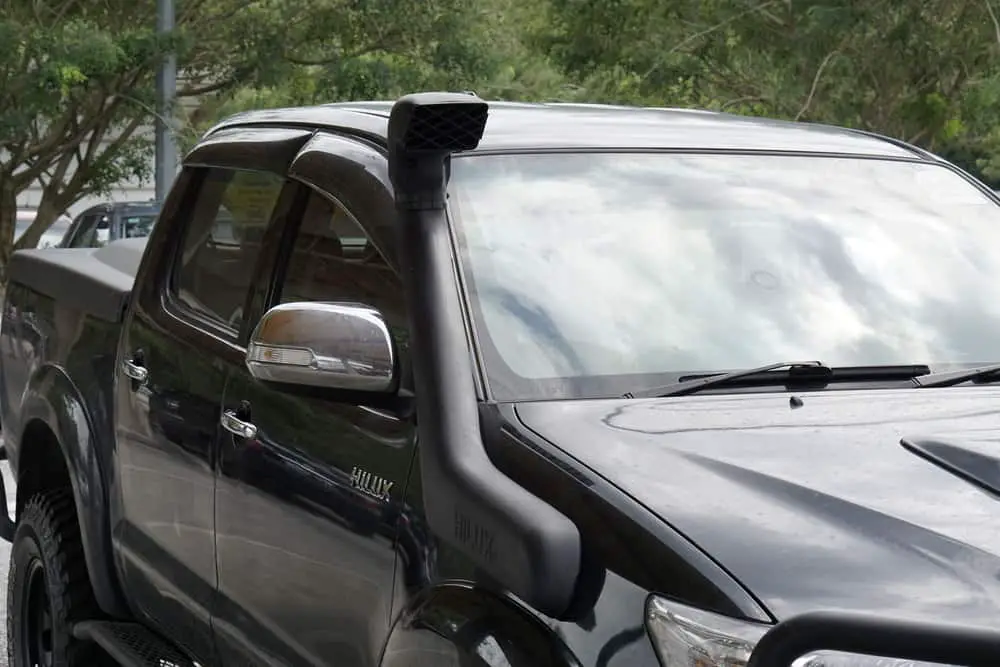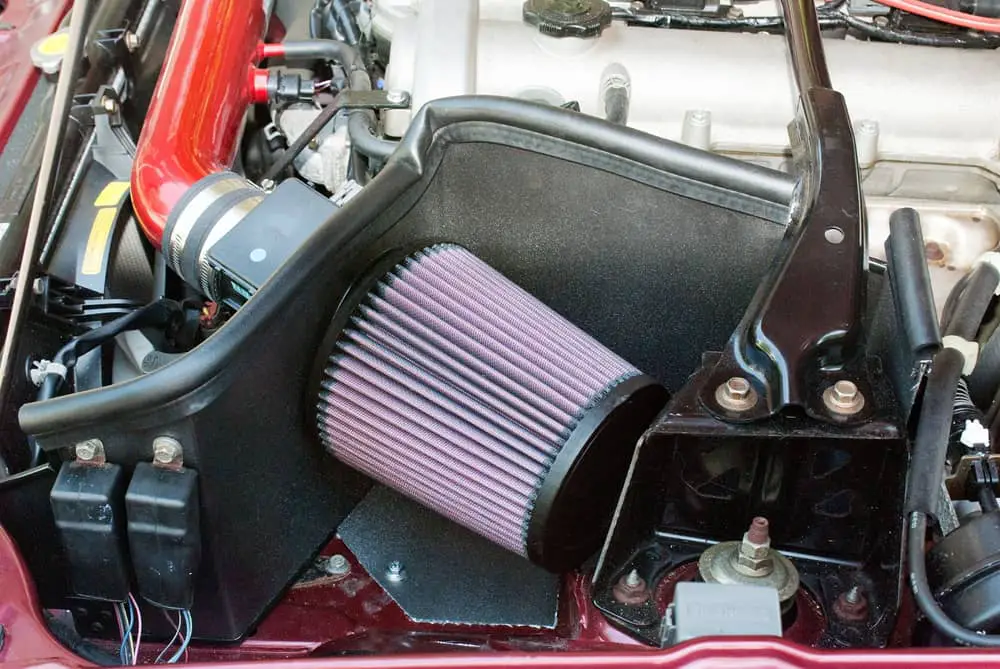
The sale of vehicle accessories has led to the invention of many aftermarket fitment products that mainly serve the owners’ ego. Ownership research has shown that very few off-road owners venture off the paved highways and public roads. Their vehicle is an expression of who they want to be.
Vehicle engineers spend a sizeable portion of their vehicle development budget testing and validating the engine’s durability. The air intake snorkel is a cosmetic accessory and adds no value to the performance and durability of the engine versus the designed cold air intake system.
Cosmetic changes to a standard model are not wrong. It is the buyer’s personal preference to define the color or the exterior, the type and width of the tires, and a host of other options that can be defined before purchase. Let’s look at the function of the Air Intake Snorkel and dispel some of the myths that the marketers of accessories will have us believe.
What Is The Function Of An Air Intake Snorkel?
If the marketers of the air intake snorkel are to be believed, this accessory will allow your off-road vehicle to wade through rivers with only the snorkel visible above the water. The colder air that is forced into the flue at roof level will pump cold, clean air into the combustion chamber of your 4×4, giving you improved performance and fuel consumption.
If you believe these claims, then you will pay the price that they demand. An air intake snorkel will not be detrimental to the performance of fuel consumption of the engine, but it will not improve it at all. The wading depth of your vehicle is determined by the height of the breather hoses of the differentials, transfer box, and the gearbox and not the cold air intake.
The wading depth is the depth to which your vehicle can be submerged underwater without water ingress into the functional parts of the powertrain. Some water can get into the cold air intake and air filter housing of the engine, but there are drain holes to allow this water to drain out and be prevented from entering the combustion mixture.
The cold air intake is typically mounted inside the engine bay with air drawn in from the top of the wheel well but behind the wheel well lining. When the water level reaches the top of the wheel, there is still no water coming into the cold air intake. The typical off-road tire (265/65R17) is 30.6- inches tall (777mm).
Most off-road vehicles have a wading depth of between 23.5-inches (600mm) and 31.5-inches (800mm). This depth is determined by the height of the air breather hoses fitted to the front and rear differentials, the transfer case, and automatic gearboxes. Getting moisture into these components will cause extensive damage.
In designing an off-road vehicle, the engineers take the location of the breather hose pipes and the height of the air intake into account when specifying the wading depth. As the manufacturer warrants the engine’s performance and other powertrain components like the gearbox, transfer case, and differentials, they will err on the side of caution when defining the wading depth.
The air intake snorkel is merely a cosmetic component that helps funnel money from your pocket into the seller’s pocket. It serves no practical function.
What Does Fitting A Snorkel Entail?
Snorkel kit manufacturers will supply you with all the plastic ducts and the required bracketry and seals to have the snorkel fitted to your vehicle. The kit will also contain a template to help you cut the required holes into the sheet metal of the front fender, where the ducting is routed to the air intake box.
The cutting of the hole to fit the snorkel ducting is the most critical part of the fitment operation. Snorkel fitments are not sanctioned by manufacturers and may result in the invalidation of the engine warranty and the paint warranty. The cut surfaces have to be treated to prevent rust.
Holes will also have to be drilled along the outside of the A-pillar, where the snorkel will be mounted outside the vehicle. These holes will present an additional rust risk.
The connection of the plastic housing of the air intake box to the snorkel ducting is not waterproof and will be required to be sealed properly if water ingress is to be avoided. Once sealed, the only source of air will be from the top of the snorkel flue.
The snorkel is designed with drain holes to allow water entering the snorkel intake when driving in the rain to drain out before it enters the air intake box. If the intake of the snorkel is large enough to allow sufficient air to be drawn into the snorkel, the performance of the engine will not be adversely affected.
Most modern gasoline and diesel engines have turbo blowers that assist in providing the combustion process with clean, cold, and compressed air. The effect of the air pushing into the snorkel is nothing in comparison to the air pressure and flow created by the turbo system.
The air intake snorkel is no more than a one-sided eye-brow painted onto the vehicle, imparting no functional effect besides making the owner seem more like Crocodile Dundee.

Conclusion
An off-road vehicle’s performance and fuel consumption will not be improved in any measurable way by replacing the standard cold air intake with a snorkel. The fitment of a snorkel will not increase the vehicle’s wading depth at all, as the wading depth is determined by the height of breather intake hoses for the differentials, transfer case, or gearbox.
Fitting a snorkel to your vehicle will require that you cut holes in the sheet metal of the front fender and drill holes into the A-pillar. The cost of the snorkel kit is in addition to the potential loss of the paint warranty and performance warranty of the vehicle.
The money wasted on a cosmetic addition of an air intake snorkel can be better spent on other more functional and fun accessories while not adversely affecting the value of your vehicle. Don’t believe what the marketers tell you, but rather listen to some off-road experts with nothing to gain.


